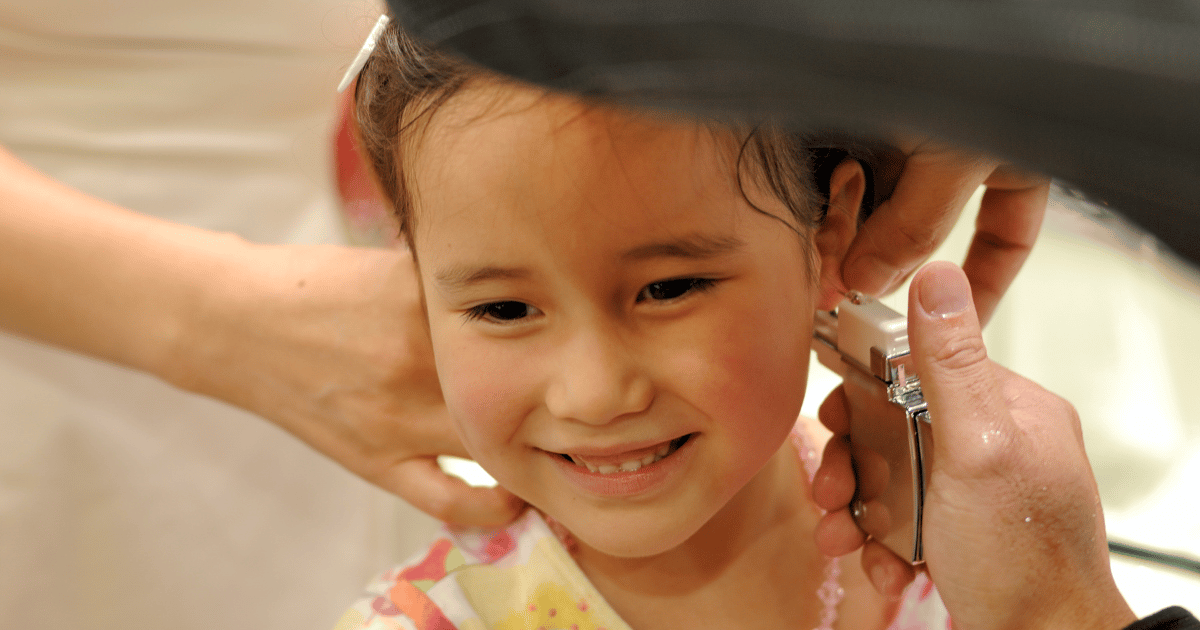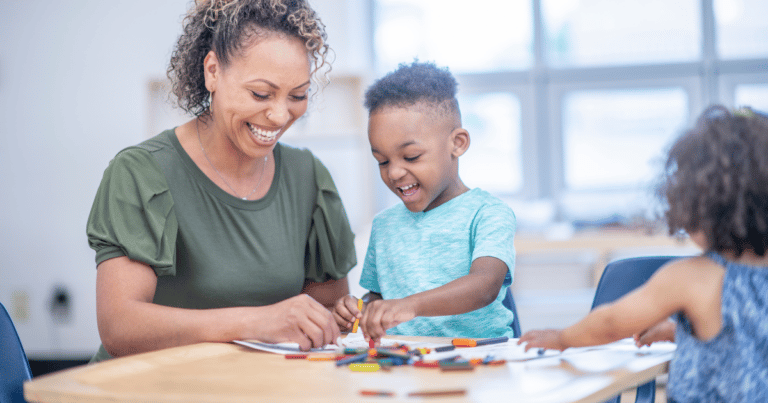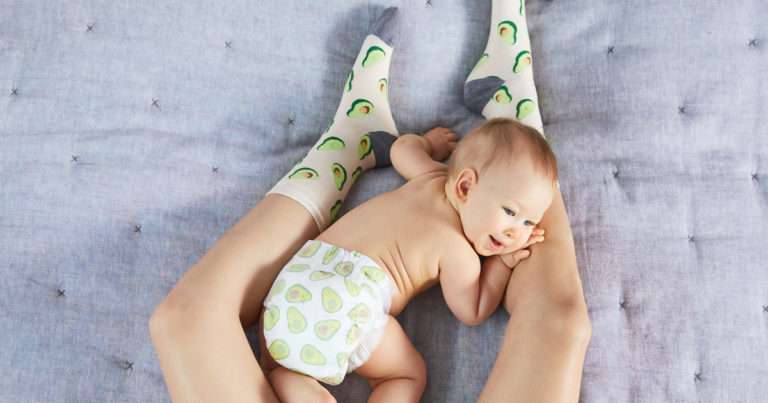
Child ear piercing is a decision that many parents face. Your little one wants to get his or her ears pierced so you have to decide whether to say ‘yes’ or ‘no’.
Suddenly you’re looking at child’s ears everywhere to see who has piercings. You realise some have, some haven’t, and … well, with your child begging you with wide eyes and a somewhat grating whinge … it’s hard to make a decision.
Everyone’s situation is different, and there are no hard or fast rules. I dealt with each of my children differently when the inevitable request came, and I recommend that you do the same.
To help you make an informed decision you can stand by, here are some essential things to consider before deciding whether or not to allow your child to get their ears pierced.
Your child’s pain threshold
First stop is to consider your child’s pain threshold because ear piercing can, at the very least, be uncomfortable, if not painful.
Ask yourself this very simple question:
Is my child going to handle it?
If the answer no, then wait a bit. Explain why you feel ear piercing is not right for him or her at this time.
Some children can be quite traumatised by the experience if they are not ready for it. Only you know whether your little one is going to be able to take it in their stride.
Child ear piercing and sports
Another essential thing to consider is whether earrings will be an issue with the sports they play.
It is possible that a child’s earrings could get in the way of certain sports activities. For example, dangling or hoop earrings may pose a risk of getting caught on equipment or clothing during active play, and studs may still pose a risk of injury if they are hit or pushed into the earlobe.
For safety reasons, it is often recommended that children remove their earrings before participating in sports or other physical activities. In fact, many sports organisations and schools have specific rules or guidelines in place regarding the wearing of jewellery during athletic events.
Remember that when the ears are first pierced you shouldn’t remove the studs for at least 6-weeks. We got caught out with this thinking we could just remove them straight-away.
Peer pressure to get their ears pierced
Peer pressure can be a common experience for children when it comes to getting their ears pierced. Children may feel pressure to conform to the expectations of their peers or to fit in with a particular group.
As a parent or caregiver, it is important to have open and honest conversations with your child about the decision to get their ears pierced. Encourage your child to make their own decision based on their own feelings and preferences, rather than feeling pressured to do something because of their peers.
Whether their siblings have their ears pierced
As a parent, you will know it is super important to treat both your children the same.
This means if you let the oldest have their ears pierced when they were ten, you have to allow the same with your younger children.
Of course, just because they are siblings, does not mean they have the same characters. For this reason, you might feel that what is right for one child is not right for another.
Even if you haven’t thought of it, I am sure your child will bring the fact that their older sibling has their ears pierced into the argument.
The age of your child
The right age to get ears pierced is a matter of personal and cultural preference, and there is no set age at which it is appropriate to pierce a child’s ears. However, it is generally recommended that children should be old enough to take care of their piercings properly and understand the potential risks and responsibilities that come with wearing earrings.
Many piercing establishments have age restrictions and require parental consent for minors. Some establishments may have a minimum age requirement of 12 or 13, while others may allow children as young as six-months to get their ears pierced with a parent’s consent.
My advice here is not only to consider your child’s age but also their maturity level, and ability to take care of their piercings.
Different metals used for child ear piercing
The best metal for ear piercing is typically surgical-grade stainless steel or 14K gold. These metals are considered to be hypoallergenic, meaning that they are less likely to cause an allergic reaction or infection.
Surgical-grade stainless steel is a popular choice for ear piercing because it is durable, affordable, and resistant to corrosion and tarnishing. It is also easy to clean and sanitise, which makes it a good option for those concerned about hygiene.
Gold is another popular choice for ear piercing because it is hypoallergenic and resistant to tarnishing. 14K gold, which is an alloy of gold and other metals, is a good choice because it is less expensive than higher karat golds, but still contains enough gold to be considered hypoallergenic.
Most reputable ear-piercers will be working with one of these metals but it is worth checking before you give them the go ahead to pierce your little ones ears.
Whether to opt for a piercing gun or a needle
Interestingly, both my girls had their ears pierced with a piercing gun but now it is generally recommended to use a needle rather than a piercing gun. The main reason for this is that needles are typically considered to be more precise, less traumatic, and less likely to cause unnecessary tissue damage than piercing guns.
Piercing guns use a spring-loaded mechanism to force the earring through the earlobe, which can cause more tissue damage and trauma than a needle, as well as increased pain and discomfort. Piercing guns are also more difficult to sterilise properly, which can increase the risk of infection.
If you are unsure, talk to your piercer about the pros and cons so you can make an educated decision that work for your child.
Where to get your child’s ears pierced
When it comes to getting a child’s ears pierced, there are a few different options to consider:
Professional piercing studio
I got both my daughters ears pierced at professional piercing studios, which are often part of tattoo parlours. These are typically the safest and most hygienic option for getting a child’s ears pierced. They use sterile needles or other piercing equipment, and are experienced in proper piercing technique and aftercare.
Paediatricians office
Some paediatricians may offer ear piercing services, which can be a convenient option for parents. Make sure to inquire about the piercing method and aftercare instructions, and ensure that the equipment and procedure are safe and hygienic.
Retail stores
Some retail stores, such as jewellery stores or department stores, may offer ear piercing services for children. While this can be a convenient option, it is important to ensure the store is fully trained and insured to pierce ears.
Regardless of where you choose to get your child’s ears pierced, it is important to do your research and choose a safe, hygienic, and reputable option. Be sure to ask about the piercing method, aftercare instructions, and any potential risks or complications before making a decision.
Religious and cultural views on ear piercings
Ear piercing is a common practice in many cultures and religions, and can have various meanings and significance depending on the cultural or religious context. Here are some examples:
- In some cultures, such as India and Pakistan, ear piercing is considered a rite of passage for both boys and girls. It is often done at a young age, and can have both cultural and religious significance.
- In many Latino cultures, ear piercing is a common tradition for girls and is often done in infancy or early childhood.
- In many African cultures, ear piercing is also a common practice and can have various meanings and significance depending on the region and community.
- In some Native American cultures, ear piercing is considered a sacred tradition and can be part of a healing or spiritual ceremony.
- In some Jewish and Muslim traditions, it is common to pierce the ears of a baby girl during a religious ceremony or celebration, such as a bris or aqiqah.
It is important to respect and understand the cultural and religious significance of ear piercing in different communities, and to approach the practice with sensitivity and cultural competence.
Further reading: How to talk to your daughter about her period (from the pros).













